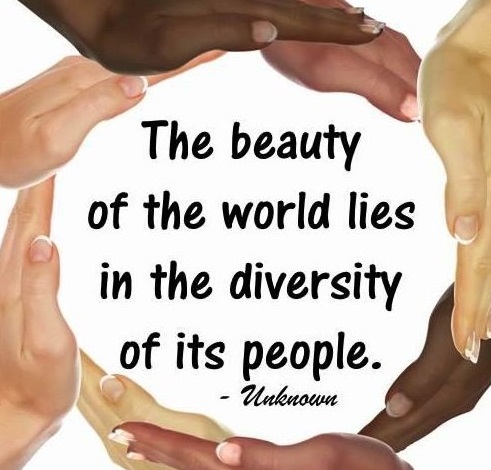Diversity in Workplace: Pluses and Minuses
Medical Pharmaceutical Translations • Sep 15, 2017 12:00:00 AM

The earth is a large ball spinning in space, teeming with life, it’s very existence dependent upon diversity. It has different types of flowers for bees to pollinate, different foods and ecosystems, different animals in the web of life. So, is it any wonder we too, as humans, are as equally diverse as all that surrounds us? It really shouldn’t be. Diversity is what makes us different and unique and binds the human world together. And it has its spot in the workplace too. Let’s explore how different cultures shape the workplace—both positively and negatively—and concentrate on the keys to leveraging its advantages and minimizing its disadvantages
THE POSITIVES
Diversity Brings Experience & Wealth of Ideas When you create a team of coworkers from diverse cultural backgrounds, you allow for their unique experiences, skills and perceptions to benefit the entire company. Diverse knowledge helps improve a companies’ productivity and responsiveness to changing conditions. By drawing from a wide variety of viewpoints, an organization can become more adaptable to fluctuating markets by more effectively dealing with business strategy needs and the needs of customers. Employees with knowledge of other languages and cultures also allow a company to provide service to customers. And reaching more people around the world is great for ROI.
Diversity Brings Personal Growth When culturally distinct workers collaborate, there is an opportunity for growth for everyone involved. Being exposed to new ideas, cultures and perspectives, helps individuals gain a better understanding of their surroundings and their place in the world. Reaching out intellectually with culturally diverse colleagues can slowly break down the subconscious barriers- everything from ethnocentrism to xenophobia. Knowing people from diverse backgrounds helps build empathy and encourages more well-rounded members of society.
THE CHALLENGES
Diversity and Communication – it can go both ways Diversity can strengthen your company’s relationships with specific groups by making communication more effective. For example, when a customer is paired with a bi-lingual employee representative, the customer will feel more comfortable working with the employee in their native language and thus, with the company.
On the other hand, diversity can also be an impediment to effective communication. It can cause confusion, diminish productivity and dismantle the cohesiveness of groups. Perceptual, cultural and language barriers need to be overcome for diversity programs to succeed. Like personal relationships, positive workplace relationships rely on effective communication.
Within the company, there also needs to be an openness to change. Colleagues must allow new ideas to enter the discussions, meetings, and corporate culture. Resisting new ideas, silences the other voices and that is never good for a team.
Diversity Brings Integration Issues There is only so much a company can do to influence social integration. Social groups form naturally and cliques are hard to control. Sometimes this leads to culturally diverse employees avoiding each other during breaks and after work. Since this is a natural process, there isn’t something inherently wrong, but it can hinder the sharing of knowledge and curb productivity and teamwork.
THE SOLUTIONS
So, what can an organization do to successfully manage diversity in the workplace? Most say that diversity training alone is not sufficient for a diversity management plan. A strategy must be created and implemented to create a culture of diversity that permeates every department and function of the organization.
Assess – First, companies need to assess their diversity process by surveying employees. A comprehensive employee satisfaction survey helps determine the challenges and obstacles to diversity that are present. Use the results to build and implement successful diversity policies. These policies must be attainable and measurable and be given a reasonable timeline for change to occur.
Inclusion -Involve every employee possible in formulating and executing diversity initiatives. This will help ward off resistance to change.
Openness– Encourage employees to express their ideas and opinions and attribute a sense of equal value to all. This attitude toward openness must be everywhere.
Train– Use diversity training as a tool to shape your diversity policy.
Start with the Leaders – Promoting diversity in leadership positions provides visibility and promotes the benefits of diversity in the workplace. Executive and managerial teams must be personally committed to the new plan as well. Attitudes toward diversity originate at the top and filter downward. For the plan to be a success, management’s cooperation and participation is paramount.
Human diversity is ever-increasing. Companies that embrace diversity instead of trying to stem the incoming tide of heterogeneity stand to make out better in the long run. Diversity richly represents all people, all backgrounds, and all perspectives – the entire human experience. Embracing it and all its genders, languages, races, and ethnicities is to be a part of that web of life on earth where all things are bound together and reliant upon one another.
By Ilona Knudson
#translations #corporatelanguagetraining #culturaldiversity #workplacediversity #aiatranslations
